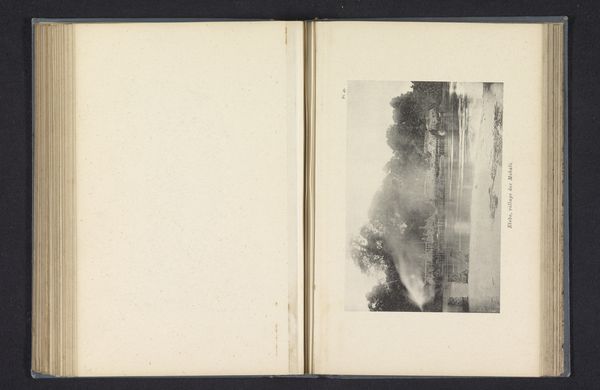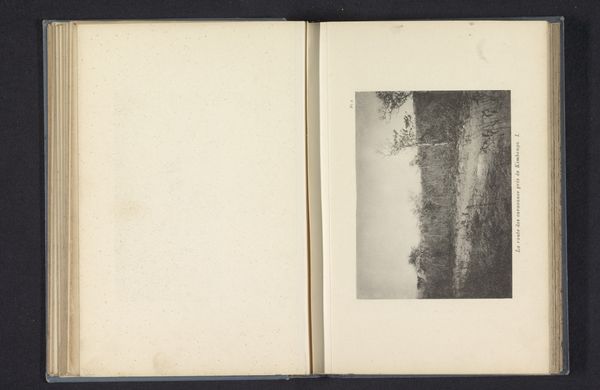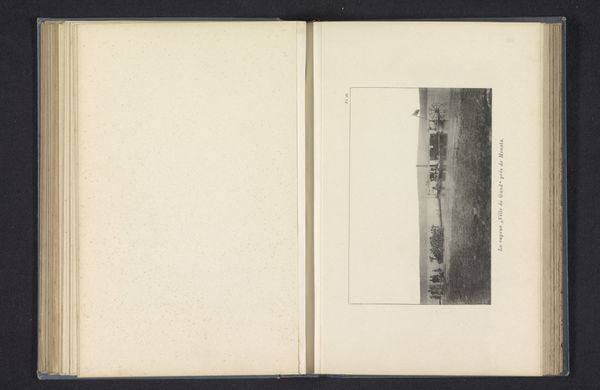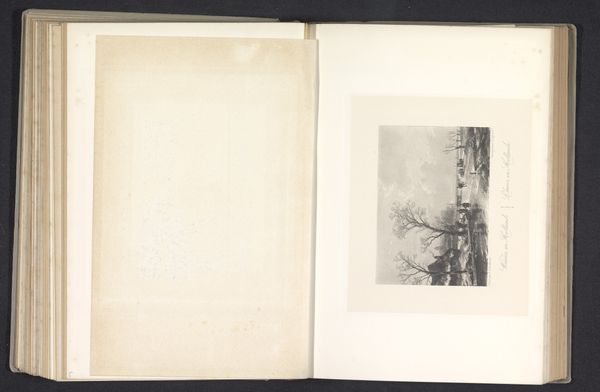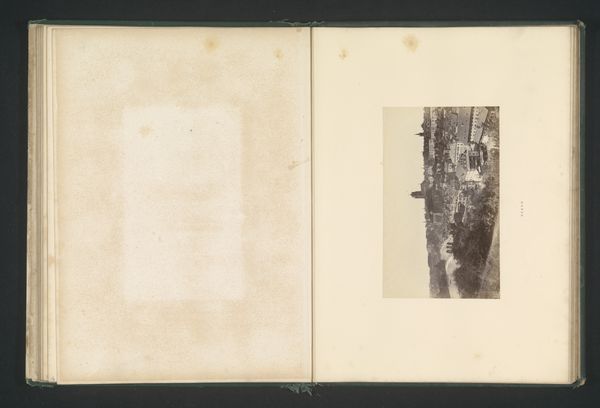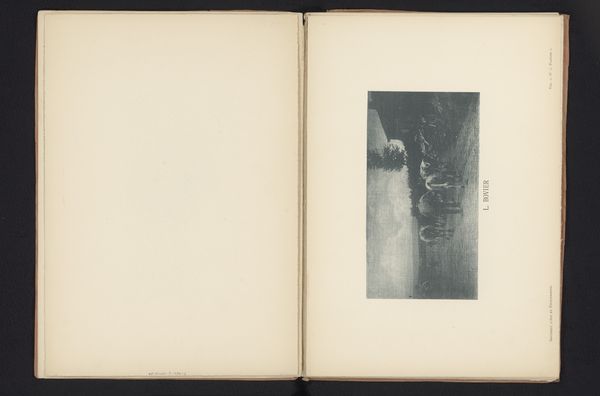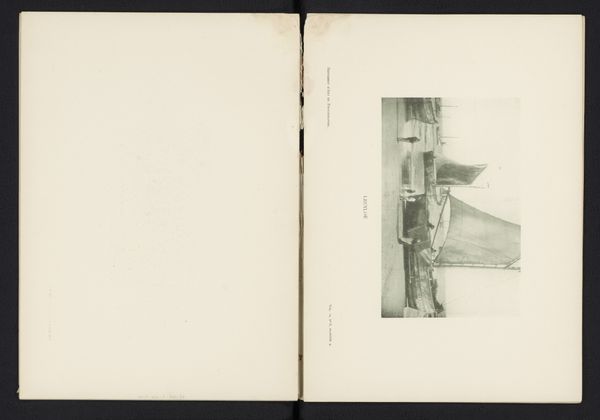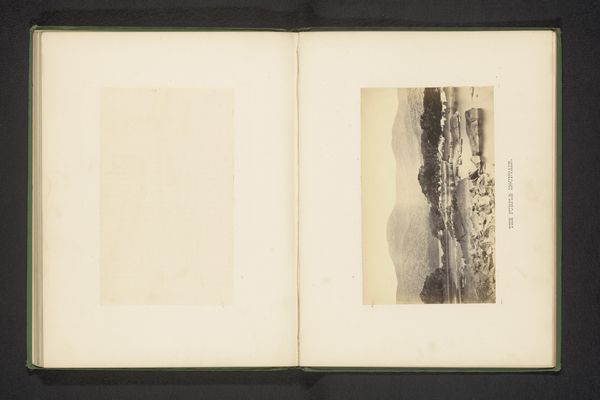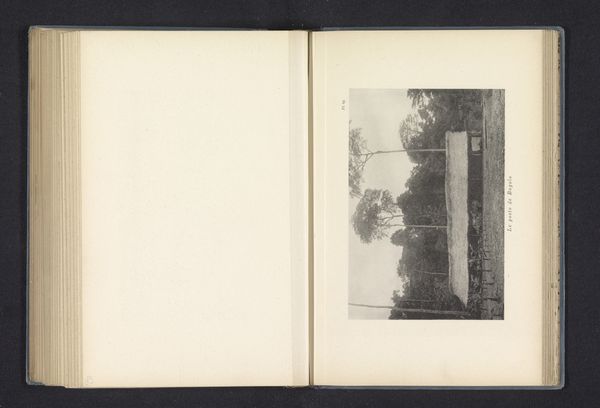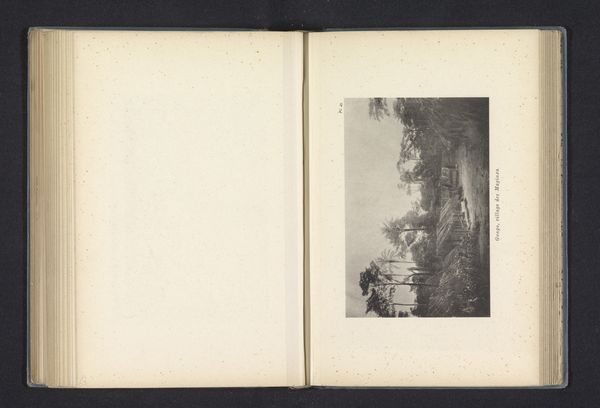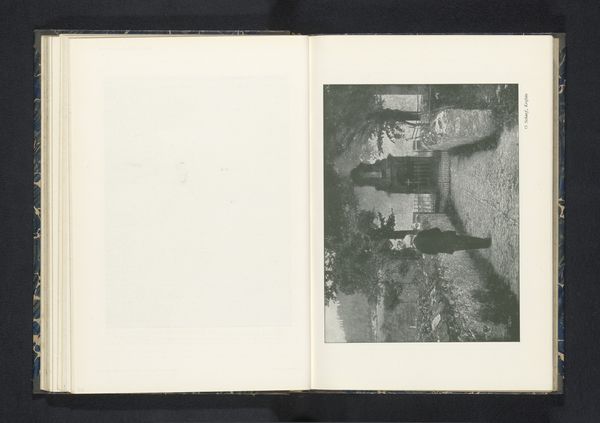
photography, gelatin-silver-print
#
african-art
#
landscape
#
river
#
photography
#
gelatin-silver-print
Dimensions: height 109 mm, width 162 mm
Copyright: Rijks Museum: Open Domain
Curator: I'm immediately drawn to the almost palpable stillness of this image. There’s something so quietly powerful about it. Editor: Indeed. We are looking at an albumen silver print by Franz Thonner. Created around 1896, it’s titled “Gezicht op de Mongala nabij Businga," which translates to “View of the Mongala near Businga.” Curator: The reflections on the water are almost dreamy, like a shimmery, blurred impression of the jungle landscape. I’m sensing that it speaks to our longing for escape and discovery, don't you think? Editor: Undoubtedly, the photograph masterfully utilizes a play of light and shadow. Thonner carefully arranges the verticality of the trees on the river bank in relation to the horizontal plane of the river itself, which serves to heighten the perceived depth and scale. Note how that creates a powerful illusion within the contained frame. Curator: Yes! And you feel so removed from… well, from everything that ISN’T the view in front of us. Given its historical context—part of a colonial project—there's a troubling aspect to that feeling too. The ‘discovery’ narrative casts the Indigenous population as a feature of this exotic landscape. Editor: It does raise critical questions, doesn’t it? The framing choices direct our eye. And the lack of human presence other than a small canoe really underscores your point. We need to be conscious that these colonial-era depictions of Africa often lack complete narratives. What remains unsaid becomes vital. Curator: Exactly. Despite its captivating beauty and Thonner's skilled composition, the image acts as a potent reminder to analyze our reactions and look for all that this glimpse into the past obscures. Editor: To that end, by analyzing structure and form alongside historical contexts, we unlock so much in visuality. Curator: Precisely, it makes looking at any art from the past feel like entering into a fascinating and necessary kind of dialogue.
Comments
No comments
Be the first to comment and join the conversation on the ultimate creative platform.
